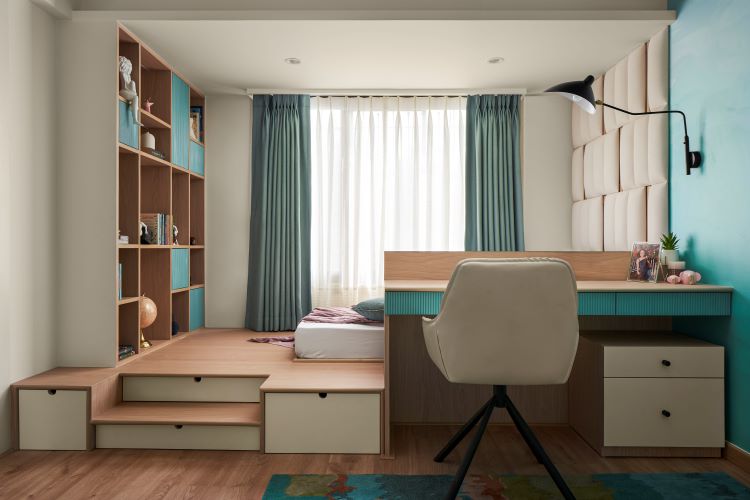HOW TO MAKE SMALL SPACES LOOK BIG

Rohini Bagla
Designing small spaces to feel bigger and more impactful is an art that blends creativity with practicality. It’s about transforming compact areas into environments that feel open, inviting, and purposefully designed, regardless of the limited square footage. One of the most powerful tools at your disposal is natural light. Sunlight has an unparalleled ability to open up a space, making it feel brighter and larger. Heavy curtains or drapes that block out light can make a room feel smaller and more confined. Instead, opt for sheer fabrics or blinds that allow sunlight to stream in freely. If your room lacks ample natural light, you can create a similar effect by choosing light-colored walls and reflective surfaces. These surfaces, whether they be mirrors, glossy furniture, or metallic accents, help bounce light around the room, amplifying the sense of space and brightness.
Color is another critical factor in making a small space feel larger. Lighter shades, such as whites, soft grays, and pastels, have the power to reflect light, creating an airy and open atmosphere. These colors trick the eye into perceiving the space as larger than it is. However, if you’re drawn to bold colors, there’s no need to completely avoid them. Bold hues can be used strategically in small doses, such as on throw pillows, artwork, or a feature wall.
Mirrors are often considered magic in the world of interior design, especially when working with small spaces. A well-placed mirror can do wonders by reflecting both light and views, instantly doubling the visual size of a room. For the best effect, position a large mirror across from a window to maximise the amount of natural light being reflected. Additionally, furniture with glass tops or shiny, reflective surfaces can create a similar illusion, making the space feel airy.
In compact spaces, furniture selection is crucial. Every piece should be carefully chosen not only for its style but also for its functionality. Multi-functional furniture is particularly valuable in small spaces, where every square inch counts. Think of a sofa that doubles as a bed or a coffee table with hidden storage compartments. These pieces allow you to maximise your space without cluttering it, ensuring that each item serves more than one purpose.
Another effective strategy for expanding a small space is to think vertically. When floor space is limited, look to the walls and ceiling for opportunities to add height and depth. Tall bookshelves, vertical art pieces, and hanging plants draw the eye upward, creating the illusion of more height in the room. Floor-to-ceiling curtains are another excellent way to elongate the room and make the ceilings appear higher, adding a touch of drama and elegance.
Storage is another crucial element in designing small spaces. Without adequate storage solutions, clutter can quickly accumulate, making the space feel chaotic and cramped. Look for ways to incorporate hidden or built-in storage that doesn’t detract from the room’s design.
Great design is not about the size of the space, but the creativity and intention behind it. With these strategies, your small space can have just as much impact as a larger one, proving that thoughtful design makes every inch count.
Rohini Bagla is Founder & Principal Designer, Studio Rohini Bagla


